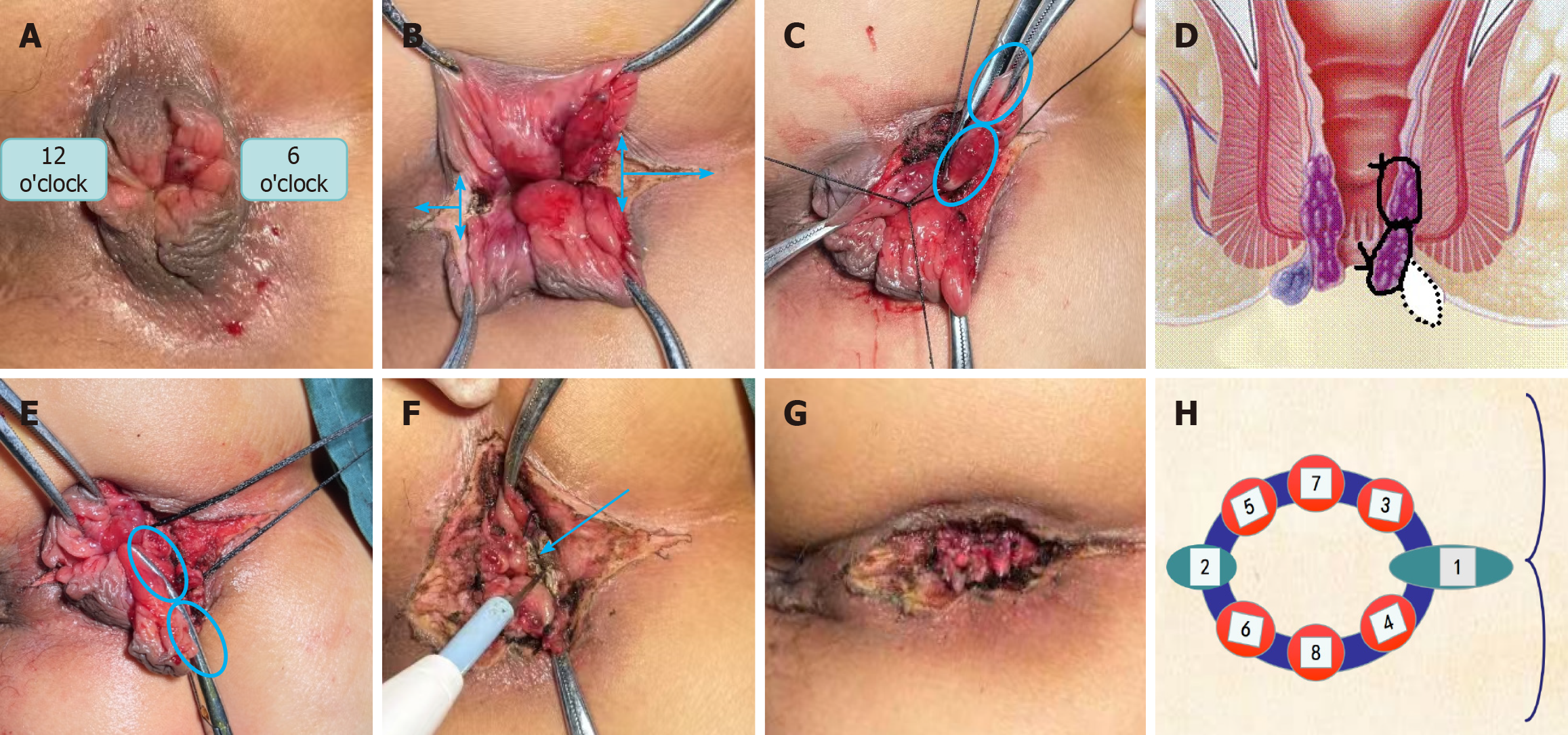Copyright
©The Author(s) 2025.
World J Gastroenterol. Oct 21, 2025; 31(39): 110288
Published online Oct 21, 2025. doi: 10.3748/wjg.v31.i39.110288
Published online Oct 21, 2025. doi: 10.3748/wjg.v31.i39.110288
Figure 1 Transverse incision with longitudinal ligation procedure.
A: Preoperative images showing circumferentially prolapsed hemorrhoids accompanied by skin tags; B: Horizontal incision: Transverse incision of the hemorrhoid at the 6 o’clock and 12 o’clock positions, forming a horizontal “I” shape in the front and rear of the anal region; C-E: Longitudinal ligation: A vertical ligation was conducted along the anal canal, incorporating multiple ligation points that pass through the “8” knot to relieve pressure; F: Degree of anal release: At the conclusion of the surgery, the focus is on both internal and external release at the horizontal incision site located at 6 o’clock; G and H: Postoperative images: Following the complete removal of circumferential hemorrhoids, multiple ligation points are visible, arranged in a staggered pattern that maintains balanced tension. The blue arrows and circles indicate the direction of the surgical incision.
- Citation: Song XB, Wang YZ, Wang YM, Sun H, Li JN, Ma HF, Li X, Sui TT, Liu RH, Lai LX. Optimizing circumferential prolapsed hemorrhoid surgery: Transverse incision with longitudinal ligation procedure delivers superior radicality compared to Milligan-Morgan technique. World J Gastroenterol 2025; 31(39): 110288
- URL: https://www.wjgnet.com/1007-9327/full/v31/i39/110288.htm
- DOI: https://dx.doi.org/10.3748/wjg.v31.i39.110288













